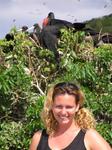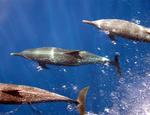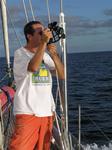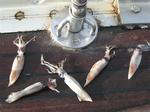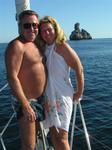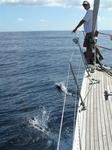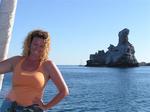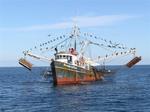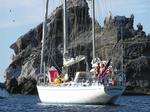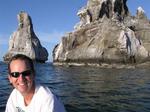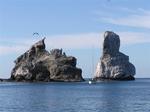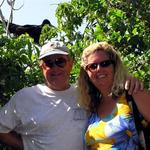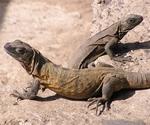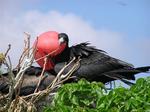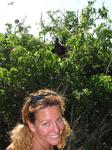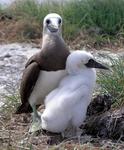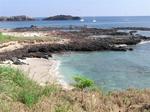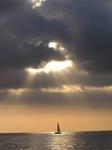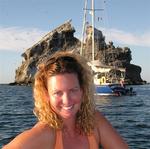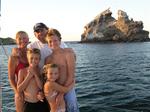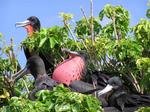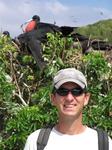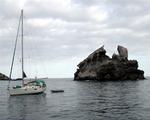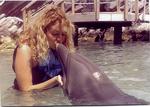
WheresCherie.COM
4300870 visitors since 07/2002
Cherie is currently in
the United States
Featured on:
Yahoo! Picks
&
USA Today
Register an account!
Registering for an account is quick, and registered
users can send messages to other users, post on message boards
rate stories, and are notified of site updates.
| poll |
| Where are you going next? |
logged users ::
active for last 5 minutes
Site created by
Raging Network Services
Logo by
Chris Barela
Click on each picture to see it full size.
read comments (0) |
write comment| views: 12138
| rated: 0.0
printer-friendly version
"Real integrity is doing the right thing, knowing that nobody's going to know whether you did it or not." -- Oprah Winfrey
WheresCherie.COM Quote
175--Mexico: Isla Isabela is for the Birds
@ CherieSpotting
Jan 16 2004 - 11:00 PSTcherie writes: “Is that a dead man?” I asked out loud.
I saw something odd floating in the distance, but I wasn’t sure what it was. Rennie, Anne, Greg and I were sailing on Cassiopeia, a Swan 65. There was no land in sight and we were headed towards Isla Isabela. I shimmied my way up to the bow and saw that we were headed right for the floating carcass!
The deceased lifted up his head and looked at me. His back was a carapace. It was a turtle! I started screaming: “Turtle, turtle, turtle!” Normally I would have photographed such a moment but the turtle was about to become turtle soup. We were headed right for it at 8-knots!
I imagined what the enormous leatherback must have been thinking: “Here I am peacefully floating in the middle of the ocean and a 65-foot ketch is headed straight for me.” Maybe the turtle wouldn’t have known it was a ketch.
“Starboard, starboard, starboard,” I wailed. (If the truth be known I actually screeched: “right, right, right!”) Rennie reacted quickly and fell off our course. But it wasn’t fast enough. The turtle whacked into the hull with a giant thud.
“We hit a turtle!” I cried, devastated.
“We didn’t hurt the turtle,” Rennie said, and he pointed just aft of the boat. I glanced over the transom in time to see the turtle poke his head up. I wish I could have flipped him a couple aspirin. The aquatic reptile gave us a well-deserved dirty-look. If turtles could talk, he would have cussed us out.
I sulked. “Can we go back and see if he is okay?” I asked Greg.
“We don’t have time.” Greg said. He was right; we had to drop the hook at Isla Isabela before nightfall.
“You wouldn’t hit a dog and just drive off.” I told Greg. At that point my logic was gone—my words were raw emotions. The word “turtle-killer” may have slipped out of my mouth, but I didn’t mean it.
Greg explained to me that if the turtle had hit the prop, we would have heard it. Since he just ricocheted off the side, the turtle would be fine. “That’s what that tough shell is for,” Greg advised me.
“Nature gave the turtle a chitinous shell to protect it against 80,000 pound boats?” I was being a smart aleck, but there was no time for my sarcasm. We were being surrounded—by turtles.
“There’s another one!” Rennie hollered. Cassiopeia changed her course again and we safely avoided another turtle. I did a little celebration-of-life dance and Rennie put himself on “Turtle Watch.” Anne made the snacks—being on turtle watch makes you hungry.
The sea was calm and the turtles looked like over-sized floating coconuts. Cassiopeia weaved through the pod of turtles like a drunken old lady, criss-crossing the rhum line as if she were a seamstress trying to stitch the ocean together. Later I learned that a group of turtles can be referred to as a bale, dole, nest or turn of turtles (but not a pod.)
As we got closer to Isabela, the marine life exploded. It was as if the ocean couldn’t contain its own abundance. Fish flopped out of the sea and dolphins raced around the hull. A hug manta ray leapt out of the water and crashed into the ocean like an out-of-control flying marine saucer.
As soon our heading stabilized, Greg had an idea. “Let’s turn off all the electrical instruments and figure out where we are going with the sextant.” (I think guys like sextants because of the first part of the word.)
Rennie, the Captain, didn’t like the idea of turning off the GPS.
“How about if we leave the instruments on and you just don’t look at them,” Rennie offered. It seemed fair enough.
Still, I wasn’t easily sold on the celestial navigation idea. “Are you trying to turn something easy (navigation) into something hard?” I asked Greg.
“It will be fun!” Greg insisted. “Besides, you should know how to navigate by the sun and the stars. What if there is a big war and the government turned off the GPS. Wouldn’t you still want to sail?” Greg has been preparing the last 30-years for the apocalypse. I bet if you look in his garage, he’s got an ark he’s refurbishing in case the polar caps melt.
Once again I succumbed to logic and Greg dug the sextant out of its dusty box. “It’s only the past 15 years that sailors have relied on GPS,” Greg reminded me.
Greg brought out a celestial navigation book fatter than an unabridged dictionary. I was hoping he was going to use it as a booster-seat, but my worst fear was realized—that big book with little print was the main text of my impromptu class.
James Lawrence said: “Navigation is easy. If it wasn’t, they wouldn’t be able to teach it to sailors.” James never met me. I’m a simple girl, and I am very fond of the uncomplicated digital display of GPS.
But the more I thought about it, the more the idea grew on me. Celestial navigation is as uncomplicated as you can get—you don’t need any electronics. It’s not difficult to figure out the boat’s unknown position (where the heck are we?) from a known position (that island over there.) Greg was right when he said, “Understanding celestial navigation will make you a better sailor.”
“Okay, teach me.” Now I was eager to learn.
“I have to figure it out first,” Greg said.
“You don’t know how?” I asked astonished. Greg’s an Eagle Scout, which means he pretty much knows everything.
“No, we’ll learn together.” Greg said.
Ironically, the island we were trying to find without GPS was the very island that was in the wrong place on the chart. Stumbling across Isabela is like discovering hidden treasure. According to the Yachtsmen Chart Book, “Isla Isabela is 1 ¾ miles farther SW than shown on [the] chart.” That’s sailor lingo for: we know where it is—but it’s not where we put it on the chart.
After a crash-course in celestial navigation, Greg calculated that we were only 8 miles away from where we actually were. So between the chart we weren’t supposed to use for navigation, and the GPS we weren’t supposed to look at, and the sextant that hadn’t had a breath in a decade, we miraculously found Isabela. As the old saying goes, “A true navigator doesn’t search for an island. He points his boat in the right direction and the island comes to him.”
I’ve sailed in Egypt, France, Alaska, Mexico, Costa Rica, Panama and much of the Caribbean. The anchorage at Isla Isabela is the most dramatic I’ve ever seen. The 150-foot towering rocks called “Los Manos” take your breath away.
A day sail from San Blas, Isabela is a tiny uninhabited island 17-miles off the Mexican coast. It’s a craggy caldera that has been taken over by birds and lizards. Over the years, the sea fought its way through, and made a nice cove for sailors. Isabela is the closest thing you can get to understanding how the “New World” must have looked five-centuries ago.
Thousands of birds catch thermals and swirl over the island like something out of an Alfred Hitchcock movie. This island’s for the birds. The ex-volcano is loaded with frigates, gulls, terns, boobies, cormorants and lizards that I’m not smart enough to know the names of. The frigates hoot and puff out their scarlet pouches.
Those birds are some sex-starved feathered vertebrates. I guess that is what happens when you’re stuck on an island—slim pickings. The primal mating-rituals make the males look like they swallowed a red balloon that’s about to burst. Or it looks like the frigate just set its own ‘chute.
If the birds don’t scare off boaters with the stench of their daily droppings, they organize a daily honk-off to see who is the loudest. If I wasn’t sure that I was anchored off an island—I would have thought I was stuck in traffic.
Greg and I decided to jump off Cassiopeia and go snorkeling before sunset. That’s when I swam into Heidi Fults, the adorable 7-year-old sailor from Lumuria. The Fults family is my favorite boating family.
Suzanne and Greg Fults have fantasized about sailing off into the sunset since they got married in 1985. The Fults made their dream a reality when they moved their family of five aboard their Beneteau 444. Some called them crazy—I call them courageous.
The Fults pulled their kids out of the Newport Beach school-system and set sail for Mexico in October 2003 with the Baja Ha Ha Cruiser’s Rally. Now the Fults’ kids, Kyle (13), Cory (10) and Heidi (7) are learning how to identify fish and open coconuts, in addition to their regular school lessons.
I was snorkeling next to Heidi at Isabela when she was stung by a small jellyfish. She popped her head out of the water and said: “Dad, can you get me some sand?” Greg, her dad, dove to the bottom and emerged with a handful of the ocean’s bottom for his little girl. Heidi rubbed the coarse sand on her arm until the sting went away. Then she continued to snorkel like nothing happened. What a cool kid!
Greg and I continued to feed the fish—they plucked the delicious goodies right from our fingertips. Why do humans always give animals the best food? The fish got scallops seared in butter and later that night we feasted on canned peas.
I’m always a bit wary snorkeling off Isabela. The first time I was at the island, in 2001, a panga almost ran me over. The local driver was horrified to realize that his prop came so close to me it ripped my fin off. At least I learned what my life was worth. He gave me four lobsters and a sincere apology. And my fin has an impressive gauge in it that’s like a cool scar, without the pain of stitches.
Some people fear moving pangas, other people fear stationary rocks. I’ve heard sailor’s gossip about having trouble anchoring at Isabela. I think it’s a bunch of hooey. I’ve been to Isabela a few times, and I’ve never had an issue. But I don’t mind keeping the rumor alive, if only to preserve Isabela for the truly adventurous. As long as you are cautious—there is nothing to fear (except a really big rock in the middle of one of the anchorages.) But it’s easy enough to avoid in daylight.
After a peaceful night’s sleep, Cassiopeia’s crew of four sipped coffee in the cockpit and watched a billion stars fade into a crimson sunrise. Then we set out to explore the interior of Isabela. Perhaps Suzanne Fults said it best: “It’s just like being in Jurassic Park, without all the scary dinosaurs.”
If you lost your sense of smell, Isabela would be paradise. It’s a stinky place, but after a few days your nostrils grow numb to the stench of the bird droppings.
Hiking through the banana groves I realized that the island’s birds have no fear. Like Garibaldi, they know they are protected. We explored the island, made bird calls, and waddled around after the fluffy baby chicks.
Apparently we arrived on the island when the birds were having a blue-footed-boobie convention. Their legs were such a vibrant blue; they must have spent their days smashing grapes.
After we took the “hike” to Crater Lake, I was reminded once again that: “It’s the journey.” Crater Lake was covered with a thin mucus of bird crap. Even the most rebellious teenager (on a double-dare) wouldn’t jump into that stagnant body of water. The lighthouse-hike was much better. At least that’s what Greg said. He was the only one brave enough to scale the steep rocks.
This was Rennie and Anne’s first time to Isabela and they were both amazed and impressed. “I hope they never put a Port Captain’s office here,” Rennie said. When you find a gem like Isabela, you want to preserve it for future generations.
After hiking around the island, I joined the Fults family aboard Lemuria. Suzanne told me that she loved cruising with her family, but she had one wish. One day she wanted Lemuria to be the only boat anchored off an island. I looked at the other five yachts in our anchorage. I wished I could make them all disappear.
At sunrise, I was surprised to find that Cassiopeia and Lemuria were the last two boats anchored off Isabela. The other yachts had sailed out under the cover of darkness. The Cassiopeia crew quietly pulled up the anchor, and set sail for a new destination. I smiled as I snapped photos of Lemuria, finally alone in their own Mexican paradise. I only wished could have seen their faces when they woke up.
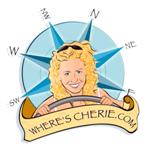 |
 RSS Feed
RSS Feed